The Treaty of Peace and Friendship between Japan and the People's Republic of China is a peace treaty concluded between the People's Republic of China and Japan on August 12, 1978. The treaty was signed in Beijing by Huang Hua, Foreign Minister of the People's Republic of China, and Sunao Sonoda, Minister for Foreign Affairs of Japan. The treaty went into effect on October 23, 1978 with the state visit of Vice Premier of the PRC Deng Xiaoping to Japan. The treaty had its origin in the Joint Communiqué of the Government of Japan and the Government of the People's Republic of China of 1972. Negotiations on a formal peace treaty began in 1974, but were drawn out over various disputes until 1978. The treaty ultimately consisted of five articles, and was strongly opposed by the Soviet Union.

The Sino-Soviet Treaty of Friendship, Alliance and Mutual Assistance, or Sino-Soviet Treaty of Friendship and Alliance for short, was a bilateral treaty of alliance, collective security, aid and cooperation concluded between the People's Republic of China and the Union of Soviet Socialist Republics on February 14, 1950. It superseded the previous Sino-Soviet treaty signed by the Kuomintang government.

The Sino-Soviet Non-Aggression Pact was signed in Nanjing on August 21, 1937, between the Republic of China and the Soviet Union during the Second Sino-Japanese War. The pact went into effect on the day that it was signed and was registered in League of Nations Treaty Series on September 8, 1937.

The Treaty of Good-Neighborliness and Friendly Cooperation Between the People's Republic of China and the Russian Federation (FCT) is a twenty-year strategic treaty that was signed by Jiang Zemin of China and Vladimir Putin of Russia, on July 16, 2001.

Sino-Soviet relations, or China–Soviet Union relations, refers to the diplomatic relationship between China and the various forms of Soviet Power which emerged from the Russian Revolution of 1917 to 1991, when the Soviet Union ceased to exist.

The Treaty of Friendship and Alliance was a treaty signed by the National Government of the Republic of China and the Government of the Union of Soviet Socialist Republics on 14 August 1945. Soviet and Mongolian troops then occupied Inner Mongolia and Manchuria, after they had seized it from the Japanese during World War II. In a declaration made in connection with the treaty, China accepted the independence of Outer Mongolia within its previous borders and disavowed any Pan-Mongolist intentions of the occupiers if a referendum on the issue was held. Also, the Soviet Union ceased aiding the Chinese Communist Party and the Ili National Army, which were rebelling in Xinjiang. Both nations also agreed upon joint control of the Chinese Eastern Railway and to facilitate its eventual return to full Chinese sovereignty.

China–Japan relations or Sino-Japanese relations are the bilateral relations between China and Japan. The countries are geographically separated by the East China Sea. Japan has been strongly influenced throughout its history by China, especially by the East and Southeast through the gradual process of Sinicization with its language, architecture, culture, cuisine, religion, philosophy, and law. When Japan was forced to open trade relations with the West after the Perry Expedition in the mid-19th century, Japan plunged itself through an active process of Westernization during the Meiji Restoration in 1868 and began viewing China under the Qing dynasty as an antiquated civilization unable to defend itself against foreign forces—in part due to the First and Second Opium Wars along with the Eight-Nation Alliance's involvement in suppressing the Boxer Rebellion. Japan eventually took advantage of such weaknesses by invading China, including the First Sino-Japanese War and the Second Sino-Japanese War.

The Indo–Soviet Treaty of Peace, Friendship and Cooperation was a treaty signed between India and the Soviet Union in August 1971 that specified mutual strategic cooperation. This was a significant deviation from India's previous position of non-alignment during the Cold War and was a factor in the 1971 Indo-Pakistani war.
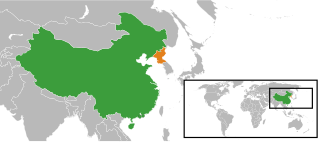
The bilateral relations between the People's Republic of China (PRC) and the Democratic People's Republic of Korea (DPRK) have been generally friendly, although they have been somewhat strained in recent years because of North Korea's nuclear program. They have a close special relationship and China is often considered to be North Korea's closest ally. China and North Korea have a mutual aid and co-operation treaty, signed in 1961, which is currently the only defense treaty either country has with any nation.
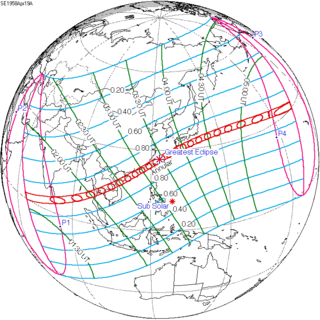
An annular solar eclipse occurred on April 19, 1958. A solar eclipse occurs when the Moon passes between Earth and the Sun, thereby totally or partly obscuring the image of the Sun for a viewer on Earth. An annular solar eclipse occurs when the Moon's apparent diameter is smaller than the Sun's, blocking most of the Sun's light and causing the Sun to look like an annulus (ring). An annular eclipse appears as a partial eclipse over a region of the Earth thousands of kilometres wide. Annularity was visible in the Maldives, Nicobar Islands, Burma, Thailand including the capital city Bangkok, Cambodia, Laos, North Vietnam and South Vietnam, China, British Hong Kong, Taiwan, Ryukyu Islands and Japan. It was the fourth central solar eclipse visible from Bangkok from 1948 to 1958, where it is rare for a large city to witness 4 central solar eclipses in just 9.945 years. Places east of International Date line witnessed the eclipse on April 18 (Friday).
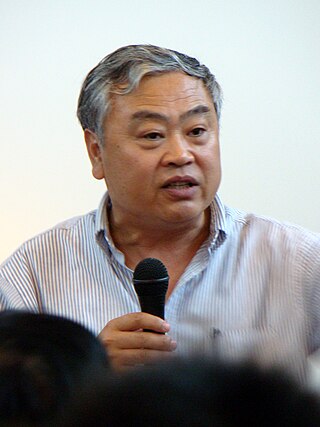
Shen Zhihua is a professor of history at East China Normal University and adjunct professor at Peking University and Renmin University of China. Shen is an expert in the history of the Soviet Union, Sino-Soviet relations, and the Cold War. He is director of the Center for Oriental History Studies of the Chinese Academy of Sciences and honorary researcher at the Chinese University of Hong Kong. In 2011 Shen was public policy scholar at the Woodrow Wilson International Center for Scholars in Washington, D.C.
Ekan Ikeguchi is a Japanese Shingon Buddhist priest, currently the High Priest of Saifukuji in Kagoshima and Shojoshin-in on Mount Koya. He holds a doctorate in medicine from Yamaguchi University and is an expert in the goma fire ritual. He has spoken at Harvard University and performed a ritual at the World Trade Center site in October 2001. Ikeguchi recently returned to the United States in November 2012 to preside over the goma fire ritual in Los Angeles to commemorate Koyasan Buddhist Temple's 100th anniversary.

The Shanghai Exhibition Centre or the Shanghai Exhibition Hall is an exhibition and convention centre in central Shanghai. The building was built in 1955 as the Sino-Soviet Friendship Building to commemorate the alliance between China and the Soviet Union, a name by which many locals still refer to the building. Reflecting its original name, the design draws heavily on Russian and Empire style neoclassical architecture with Stalinist neoclassical innovations.

China–Madagascar relations refer to the bilateral relations between China and Madagascar. China and Madagascar established diplomatic relations on November 6, 1972. China has an embassy in Antananarivo and Madagascar has an embassy in Beijing.
Events from the year 1961 in North Korea.
Cai Xiyou is a Chinese economist who served as general manager of the Sinochem Group from 2014 to 2016, while he was sacked for graft. On July 6, 2017, he had been stripped of his post and party membership. Cai had political ties with Su Shulin, former deputy party chief and governor of Fujian province.
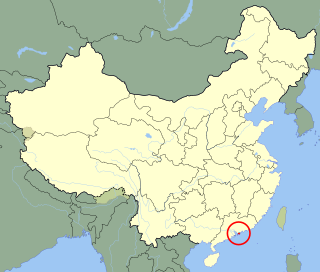
Hong Kong–mainland China relations refer to the relationship between Mainland China and Hong Kong. According to the 1997 Sino-British Joint Declaration, the United Kingdom handed control of Hong Kong over to the People's Republic of China, making it a special administrative region. In principle, Hong Kong became an autonomous administrative division based on the Hong Kong Basic Law.

The Medal of Sino-Soviet Friendship, a.k.a. Sino-Soviet Friendship Medal, was a medal awarded by the People's Republic of China.
The Japan–Russia Secret Agreements were a series of four secret treaties signed between the Japanese Empire and the Russian Empire after the Russo-Japanese War, in order to secure and recognize the rights of both sides in areas of the East Asia, specifically the Korean Peninsula, Manchuria, and Mongolia. They were signed four times between 30 July 1907 and around 3 July 1916, and were abrogated by the Soviet government after the Russian Revolution in 1917.
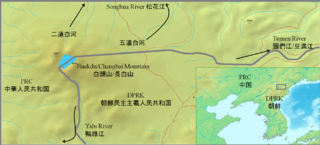
The Sino-Korean Border Agreement was signed by China and North Korea on October 12, 1962, in Pyongyang. This agreement and a subsequent agreement in 1964 define the modern border between the two countries. The agreement is widely viewed by both modern scholars and by contemporaries as being favorable to North Korea. As a result of the agreement, North Korea acquired 280 km2 of territory on and around Paektu Mountain, and 54.5% of the mountain's Heaven Lake. The previous practice of using the Yalu River and Tumen River for the rest of the border was affirmed.

















